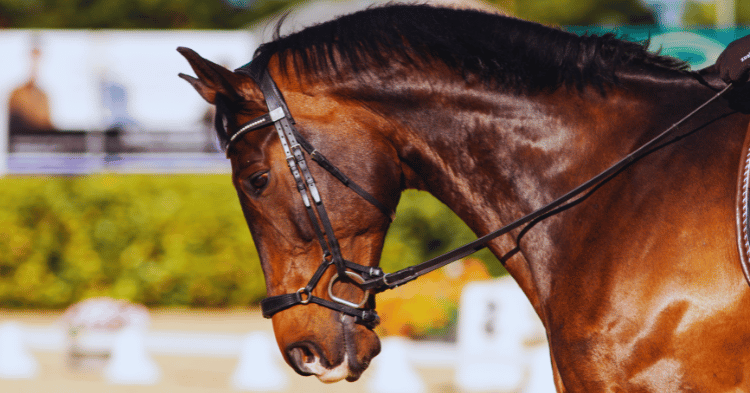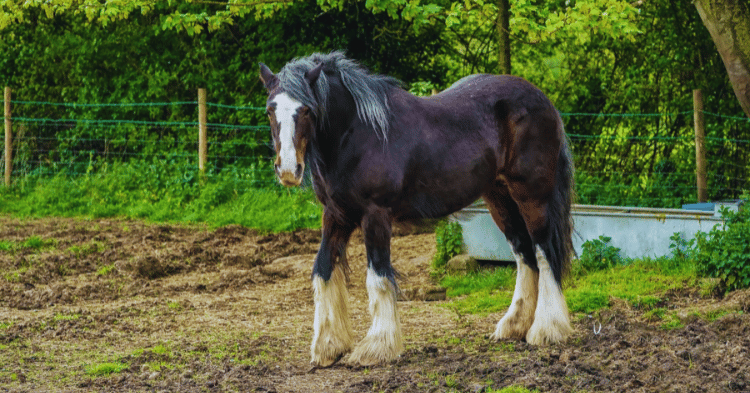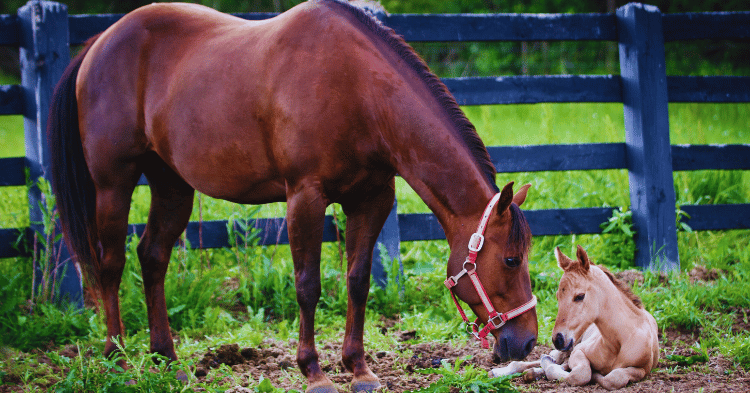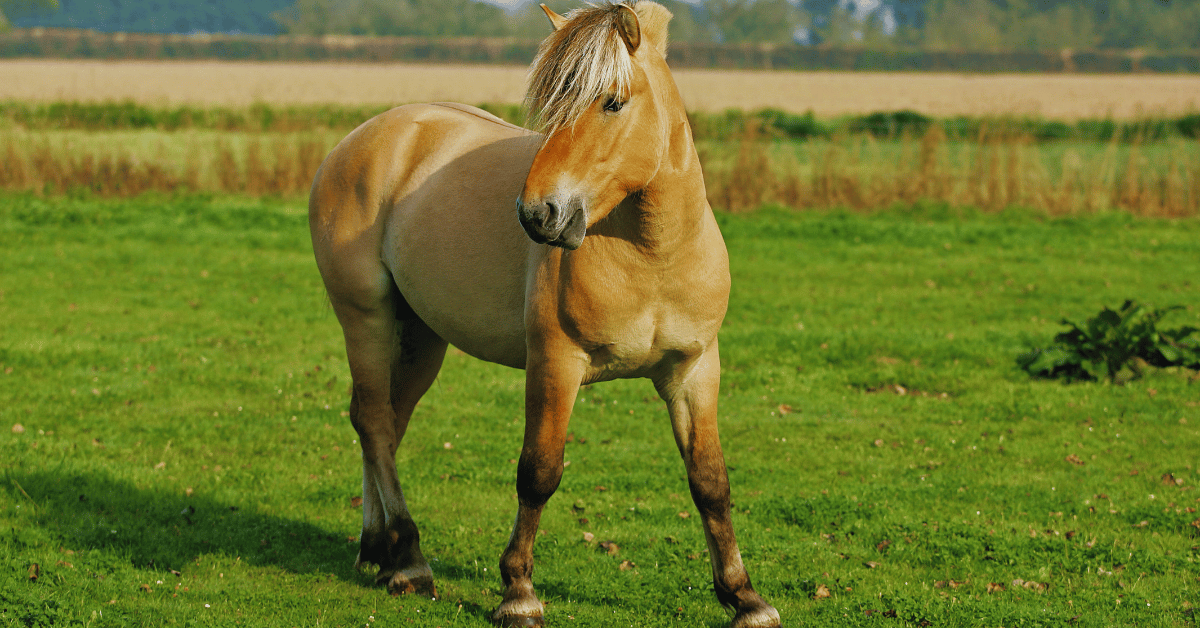Imagine standing for hours on end, barely shifting, your legs locked in place. Sounds exhausting, right? Now picture a majestic horse , its powerful legs perfectly still, seemingly defying the fatigue that humans know all too well. But do horses get tired of standing ?
Beneath their stoic exteriors lies a fascinating world of rest patterns shaped by evolution, survival instincts, and their unique anatomy. Yet, even these elegant creatures—perfectly adapted for standing slumber—have their limits. Over time, stiffness can creep in, joints can ache, and exhaustion can take its toll, especially if they’re denied an environment suited to their natural rhythms.
Thankfully, understanding how horses truly rest unveils a path to ensuring their well-being. If you’ve ever marveled at their ability to stand unwavering or wondered when they finally lay down, this exploration will shake up everything you thought you knew about these remarkable animals. Let’s uncover the truth.
Understanding Horse Sleep Patterns

Knowing how horses sleep is key to ensuring their well-being. Horses have unique sleep patterns that differ significantly from humans. Let’s dive into the sleep stages and the importance of REM sleep in horses.
Sleep Stages in Horses
Horses experience four stages of sleep: wakefulness, drowsiness, slow wave sleep (SWS), and rapid eye movement (REM) sleep. During wakefulness, horses are alert and responsive to their environment. Drowsiness is a light sleep phase where the horse rests but quickly wakes if disturbed.
Slow Wave Sleep (SWS): This stage is characterized by slow, synchronized brain waves. Horses in this stage can sleep standing up, thanks to a special “stay apparatus” that locks their legs in place. This ability allows them to rest while remaining ready to flee from predators.
Rapid Eye Movement (REM) Sleep: REM sleep is vital because during this stage, the brain’s activity is similar to that of an awake state, with rapid and irregular brain waves. Unlike SWS, REM sleep requires a horse to lie down, as their muscles need to relax completely.
Below is a table summarizing the sleep stages in horses:
| Sleep Stage | Characteristics | Position |
|---|---|---|
| Wakefulness | Alert and responsive | Standing |
| Drowsiness | Light sleep, easily awakened | Standing |
| Slow Wave Sleep (SWS) | Slow brain waves, minimal movement | Standing |
| REM Sleep | Rapid brain waves, muscle relaxation | Lying down |
Importance of REM Sleep
While horses can get some rest while standing up, REM sleep is crucial for their overall health. They need about 30 minutes to 2 hours of REM sleep daily, typically gathered in short bursts of about 20 minutes each (Equine Institute). Without sufficient REM sleep, horses can suffer from various health issues and become fatigued.
REM sleep allows horses to fully relax and replenish their energy. It plays a vital role in memory consolidation, learning, and overall cognitive function. Additionally, REM sleep helps maintain their physical health, contributing to muscle repair and growth.
For horse owners, it is essential to ensure that their horses have a safe and comfortable environment to lie down and achieve REM sleep. For more detailed insights on do horses sleep standing up and other related behaviors, explore our detailed articles.
Understanding these sleep patterns will help horse owners better manage their equines’ rest and well-being, ultimately leading to healthier and happier horses.
Factors Influencing Horse Fatigue

Understanding the factors that contribute to horse fatigue is essential for responsible horse owners. Whether it’s due to inadequate sleep or environmental conditions, knowing what affects your horse’s rest can help ensure their overall well-being.
Sleep Deficiency and Standing
Horses have unique sleep patterns, primarily sleeping while standing due to an anatomical feature known as the stay apparatus (PetMD). This mechanism allows them to remain upright with minimal muscular effort, which is a crucial adaptation for prey animals. Horses experience four stages of sleep: wakefulness, drowsiness, slow wave sleep (SWS), and rapid eye movement (REM) sleep. Unlike REM sleep, which requires them to lay down, most of their sleep occurs in the SWS stage while standing.
However, the reliance on standing sleep doesn’t mean horses don’t need to lie down. Access to properly bedded areas significantly influences their rest quality. Research indicates that horses provided with adequate bedding spend more time lying down, thus obtaining essential REM sleep (Kentucky Equine Research). Lack of REM sleep can lead to signs of fatigue, such as impaired performance and decreased alertness. Maintaining suitable conditions and monitoring sleep patterns are vital in preventing sleep deficiency.
| Factor | Impact on Horse Fatigue |
|---|---|
| Standing Sleep (SWS) | Minimal muscular effort, prevents fatigue |
| Lack of REM Sleep | Leads to signs of fatigue like drowsiness and reduced performance |
| Adequate Bedding | Promotes lying down, vital for REM sleep |
Impact of Environmental Conditions
Environmental factors play a significant role in horse fatigue. Horses are highly sensitive to their surroundings, and various conditions can affect their ability to rest properly.
One crucial factor is the availability of a comfortable resting area. Horses without access to well-bedded regions tend to lie down less frequently, which limits their REM sleep. Providing large, bedded areas enables horses to lie down comfortably, which is essential for both high-ranking and low-ranking herd members.
Environmental stressors such as noise, extreme weather conditions, and inadequate shelter can also impact sleep quality. Horses exposed to these stressors may exhibit signs of sleep deprivation, such as excessive daytime sleepiness or abnormal sleep behaviors like lying down in unusual places.
Additionally, overweight horses may struggle to lie down and get back up, further limiting their REM sleep opportunities. Therefore, maintaining an appropriate body condition is critical to ensure they can rest effectively.
For more information on maintaining your horse’s well-being, you can read our articles on can horse sweat and does a horse need a companion.
By paying attention to these influencing factors, horse owners can create environments conducive to proper rest, reducing fatigue and enhancing overall health.
| Environmental Condition | Effect on Horse Sleep |
|---|---|
| Noise | Disrupts sleep, causing stress and fatigue |
| Extreme Weather | Limits rest opportunities, leading to sleep deprivation |
| Overweight | Hindrances in lying down or getting up, restricting REM sleep |
| Inadequate Shelter | Causes discomfort and reduced sleep quality |
Understanding these factors ensures your horse receives the rest they need. To delve deeper into how horses sleep and more about their resting patterns, visit do horse sleep lying down and do horses sleep standing up.
Recognizing Horse Health Concerns

Signs of Fatigue and Illness
Recognizing signs of fatigue and illness in horses is crucial for ensuring their well-being. Fatigue in horses can manifest as a decreased ability to perform tasks, such as slowing down, being unable to jump as high, or performing poorly during activities. Addressing these signs promptly is key to preventing more serious health issues.
Several factors can contribute to fatigue, including unsuitable environmental conditions, social insecurity, and physical discomfort. Horses that do not lie down due to these factors may experience REM sleep deficiency, leading to excessive drowsiness. Some horses may even transition into REM sleep while standing, resulting in partial collapse (Kentucky Equine Research).
Additionally, comparing behavioral indicators with physical signs can provide a comprehensive understanding of a horse’s health. Thirst and hunger are primary indicators of negative experiences affecting a horse’s welfare. These indicators also reflect physical and functional states across various domains of their welfare (NCBI).
Common Signs of Fatigue and Illness in Horses:
- Decreased Performance
- Lack of Appetite
- Weight Loss
- Changes in Body Condition
- Alterations in Coat Quality
Behavioral Indicators in Horses
Horses communicate their well-being through behaviors and physical changes. Understanding these indicators helps in identifying potential health issues early.
- Changes in Appetite: A sudden disinterest in food, whether grain or hay, can signal internal illness such as colic or other gastrointestinal problems (The Horse).
- Weight Loss and Changes in Body Condition: Noticing a drop in weight or changes in body condition can indicate health problems like nutritional issues or gastric ulcers. Look for muscle atrophy, coat issues, and alterations in overall body condition (The Horse).
- Behavioral Changes: Fatigue, excessive drowsiness, and transitions into REM sleep while standing point to potential sleep deficiencies and discomfort.
Behavioral Indicators Table:
| Indicator | Possible Health Concern |
|---|---|
| Lack of Appetite | Gastrointestinal Issues, Colic, Illness |
| Weight Loss | Nutritional Deficiencies, Gastric Ulcers |
| Alterations in Coat Quality | Nutritional Issues, Internal Health Problems |
| Excessive Drowsiness | REM Sleep Deficiency, Physical Discomfort |
| Poor Performance | Fatigue, Underlying Health Issues |
For more information on ensuring your horse receives adequate sleep, see our article on do horses sleep standing up.
By being aware of these signs and behaviors, horse owners can better manage their animals’ health and well-being. Proper recognition and prompt action can prevent minor issues from developing into serious health concerns, ensuring that your horse remains happy and healthy.
Managing Horse Sleep and Well-Being
The well-being of a horse is closely linked to the quality of their sleep. Ensuring they receive adequate rest and addressing any sleep disorders is vital for their overall health.
Ensuring Quality Rest
Horses require between 2 to 5 hours of sleep within a 24-hour period, fragmented into short bouts (Equine Institute). High-quality rest is essential to their well-being and can be managed by paying attention to several factors:
Safe Environment: Ensure a peaceful and safe sleeping area. A quiet, stress-free environment reduces anxiety, allowing horses to relax and achieve sufficient deep sleep.
Comfortable Bedding: Use adequate bedding to encourage horses to lie down and fully engage in REM sleep, which they cannot achieve while standing.
Routine: Establishing a consistent daily routine helps horses adapt to scheduled rest periods.
Health Monitoring: Regularly check for signs of discomfort or pain that might prevent them from resting properly.
Nutrition: Provide a balanced diet that supports overall health and energy levels. Poor nutrition can negatively impact their rest.
| Age Group | Daily Sleep Requirement |
|---|---|
| Adult Horses | 2-5 hours |
| Foals | 4-6 hours |
| Older Horses | 3-4 hours |
Addressing Sleep Disorders
Sleep disorders in horses can lead to health issues and even behavioral changes, which is why it’s important to address them promptly.
Sleep Deprivation: Horses need about 30 minutes to 2 hours of REM sleep daily (Quora). To fully engage in REM sleep, they need to sleep lying down. Prolonged sleep deprivation can lead to health problems.
Equine Narcolepsy: Rare in horses but can manifest through sudden bouts of sleep, typically when the horse is at rest or mildly stimulated. Consultation with a veterinarian is crucial for diagnosis and management.
Discomfort and Pain: Any discomfort or pain can prevent horses from lying down and entering deep sleep. Regular health check-ups can help identify and treat underlying issues.
Environmental Stressors: Changes in environment, exposure to predators, or other stressors can lead to anxiety, affecting sleep patterns. Mitigating these stressors can help improve quality of rest.
By creating an ideal resting environment and addressing potential sleep disorders, horse owners can ensure their animals stay healthy and well-rested. For more information on horse health-related concerns, check out our articles on can horse sleep standing up and do horse sleep lying down.

